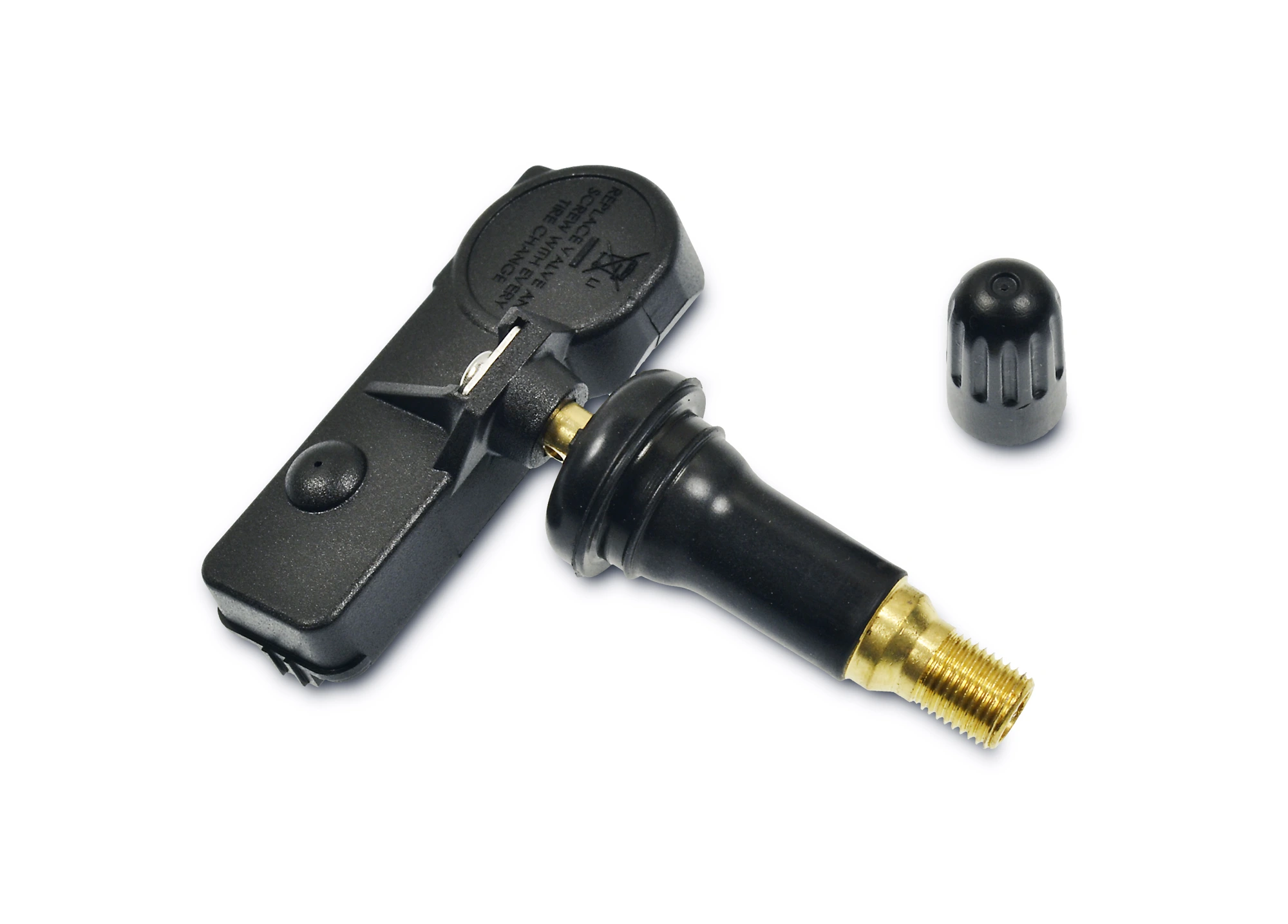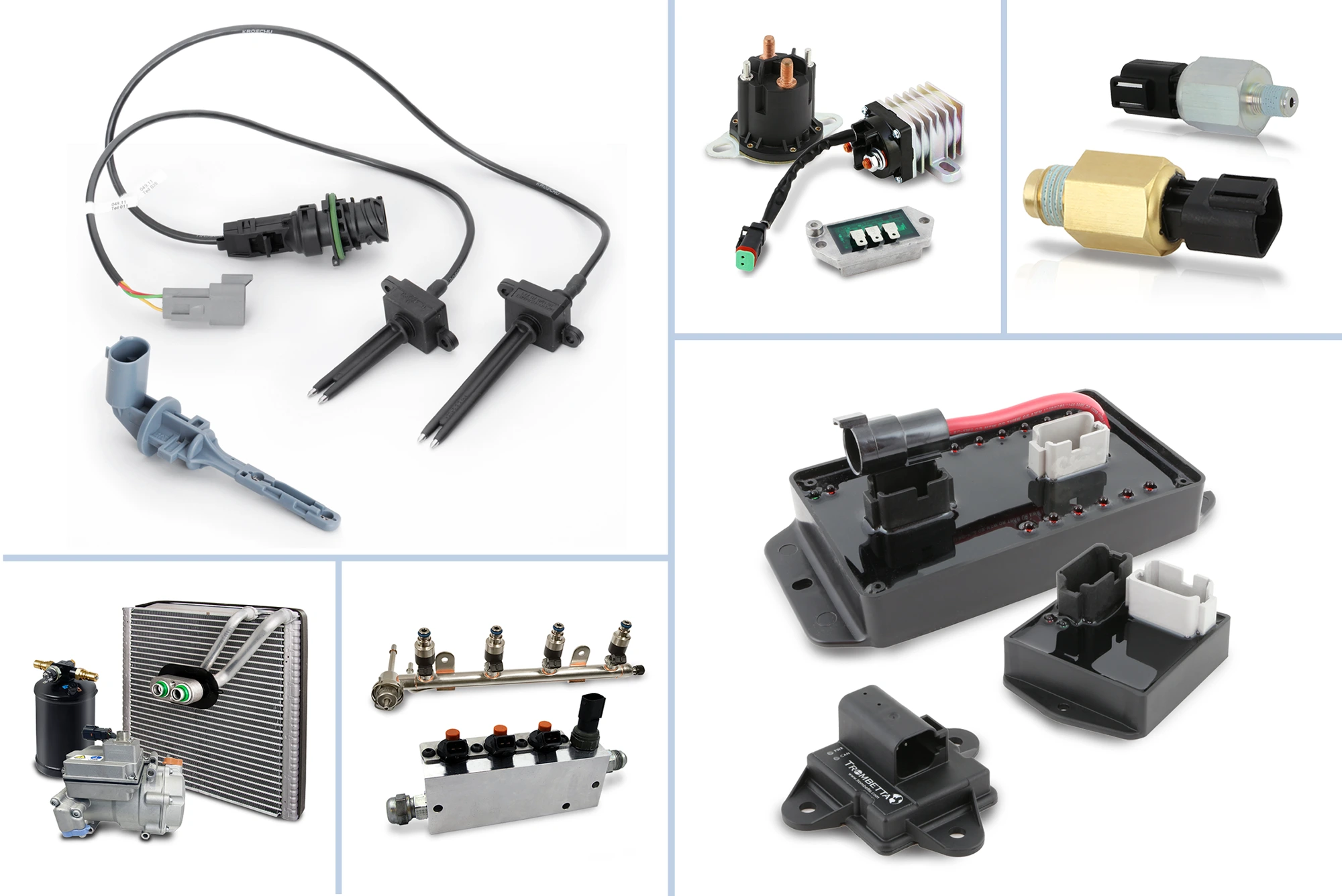August 12, 2022 / Training
Tire Pressure Monitoring System (TPMS) Repair Tips

Standard® and Intermotor® are committed to helping technicians with TPMS repairs, whether it’s offering OE-Match TPMS sensors or providing repair tips from our team of ASE-certified master technicians, like these TPMS repair tips:
1. Know the Difference Between a Solid and Flashing TPMS Light
First, it’s important to know the difference between a solid and flashing TPMS light. A solid light means there’s a tire that’s under- or over-inflated or one with damage. To correct, the tire needs to be inspected, but generally adding air will solve the problem. A flashing TPMS lamp indicates a fault with the TPMS system, such as a malfunctioning sensor or module. In this case, more diagnostic work is required.
2. Test, Not Guess
Next, before dispatching a vehicle to a technician to install new tires, be sure to confirm that the TPMS system is functioning properly. To do that, it’s critical to test, not guess. With a TPMS tool in hand and the vehicle in TPMS Learn Mode, work your way around the vehicle reading each sensor for accurate pressure, temperature, sensor ID and battery life to make sure all of the sensors are working properly. This simple step can go a long way toward making sure your customers are satisfied with their repairs.
3. Don’t Forget the Service Kit
Lastly, the Tire Industry Association (TIA), Rubber Manufacturer’s Association (RMA) and the Motorist Assurance Program (MAP) require that every time a tire is removed from the wheel you should replace TPMS service parts such as the valve stems, seals, washers, nuts, valve cores and caps. Intermotor® offers a full array of service kits to complement your TPMS repairs.

March 01, 2024 / Training
Why Pentastar Oil Filter Housings Fail
In service since 2011, the Chrysler Pentastar 3.6L engine has powered more than 10 million of the most popular vehicles on the road. These Pentastar engines are equipped with oil filter housings, which contain the oil filter, sensors, and a heat exchanger to help cool the oil. The oil filter housings on the Pentastar V6 engine have become known for their high failure rates. These failures have mistakenly been attributed the idea that the housings can warp due to heat, but this has been proven false. So, why do these units typically leak?
August 22, 2022 / Training
Variable Valve Timing (VVT) Operation
Variable Valve Timing (VVT) systems help reduce emissions and maximize engine performance and fuel economy. The VVT Solenoid (Oil Control Valve) meters the oil flow to control the actuation of the VVT Sprocket (Actuator or Phaser). The VVT Sprocket mechanically shifts the position of the camshaft. Here are a few tips for testing.
August 05, 2022 / Training
Mass Air Flow (MAF) Sensor FAQs
The Mass Air Flow (MAF) sensor is a key component of the engine’s fueling strategy. It is crucial that the MAF sensor reports with 100% accuracy to ensure peak performance, fuel economy and reduced emissions. Here are some helpful tips such as how and when to replace them and steps to extend their longevity.
August 19, 2022 / Training
Ignition Coil Operation
Coil-on-plug assemblies are designed to convert a low voltage (primary side) to a high voltage (secondary side) to fire the spark plugs. They perform the functions of both the ignition coil, which creates the spark energy, and the spark plug wire set, which delivers the high-voltage energy to the spark plug. Today's coil-on-plug assemblies come in a variety of physical and wiring configurations.
August 01, 2022 / Training
Diesel Engine Repair Tips
Diesel Engines have become more popular thanks to a steady string of advancements. New engine designs, noise and vibration-damping technologies, and improvements like electronic engine control have spawned a new generation of engines that are more powerful and fuel efficient than similar-size gasoline engines. Learn more about today's diesel engines with these repair tips from our team of ASE-certified master technicians.
January 01, 2023 / Training
A Closer Look: Variable Valve Timing
In an effort to increase fuel efficiency and elevate performance across today’s vehicles, nearly every manufacturer has equipped new vehicles with Variable Valve Timing (VVT) technology, also known as Variable Cam Timing (VCT).
January 05, 2024 / Training
A Closer Look: Turbochargers
Turbocharger Opportunities: In an effort to increase fuel efficiency, maintain performance, and reduce emissions, vehicle manufacturers are adding turbocharged engines to their lineups at a significant rate. Over the next five years, the turbo service market will continue to experience substantial growth.
September 19, 2022 / Training
A Closer Look: Turbocharger Operation and Installation
Turbochargers consist of just three major internal components: the turbine, the compressor and the bearing system that supports the turbine shaft. In an effort to increase fuel efficiency, maintain performance and reduce emissions, vehicle manufacturers are adding turbocharged engines to their lineups at a significant rate.
September 16, 2022 / Training
A Closer Look: Tire Pressure Monitoring Systems (TPMS) Operation
The Tire Pressure Monitoring Systems (TPMS) is a valid safety device that has been mandated for years. TPMS introduced a lot of new terminology – initiate, program, activate, clone, protocol and relearn. This safety system, a prime service opportunity, warns drivers of issues with their tires and protects motorists from potential danger.
January 15, 2024 / Training
A Closer Look: Servicing Electric and Hybrid Vehicles
Hybrid vehicles have been sold in the U.S. for over 20 years. As hybrids continue to grow in popularity, and as fully electric vehicles have entered the market in the past several years, they have brought with them numerous service opportunities for aftermarket repair facilities. Whether shops dive in and get involved with replacing batteries, inverters, or other high-voltage components, or they stick to light-duty servicing, there is plenty of work to go around.
January 08, 2024 / Training
A Closer Look: Ignition Coils
Engine misfires, rough idle, a decrease in power under acceleration, poor fuel economy, and a check engine light are all signs of an ignition coil that has failed. OE coils are known for their high failure rates. Read along for more information on ignition coils, how to diagnose a failed one, and why an original equipment manufacturer’s coil may not be the best replacement choice.
January 12, 2024 / Training
A Closer Look: Gasoline Direct Injection (GDI)
Gasoline direct injection (GDI) is used on most new vehicles and requires a different approach to diagnosis and service. GDI technology has been an integral part of helping to improve fuel economy while reducing emissions and can be found in more than half of the U.S. fleet. In fact, the use of GDI engines has grown by over 600% since 2010. This means that in the next five years, 42 million more vehicles with GDI will enter the Aftermarket “Sweet Spot” of 6-12 years old, during which their injectors and related parts may need to be serviced or replaced. While GDI systems have proved effective, these systems encounter specific failures and require an understanding of how they work and how to test them when they set a code.
January 26, 2024 / Training
A Closer Look: Emissions
The Check Engine Light (CEL) is arguably one of the most effective yet underappreciated advancements in reducing vehicle emissions. Following the introduction of On-Board Diagnostics II (OBD II), the CEL is illuminated continuously if an on-board system monitor has failed a specified number of times and is negatively affecting emissions. If a catalyst-damaging event, such as a misfire, occurs, the CEL will flash. In today’s world of electric vehicles, hybrids, and partial zero-emission vehicles, many people forget that simply keeping their internal combustion engine (ICE)-powered vehicle operating as designed will help in reducing emissions.
September 12, 2022 / Training
A Closer Look: Electronic Throttle Bodies and Control Systems
Electronic Throttle Control (ETC) systems are responsible for improving fuel economy, reducing emissions, protecting powertrain components and providing an overall better driving experience. Most vehicles on the road today use ETC. It is important for technicians to understand the principles of the system before delving into system specifics.
January 29, 2024 / Training
A Closer Look: Electronic Throttle Bodies
A shop’s reputation is affected by things like accuracy of diagnosis, quality of the repair, and friendly service. Equally as important is the quality of the parts installed. If the shop does everything right, and the part fails, the customer will ultimately be upset with the shop. When a new part fails, the customer is inconvenienced again, and begins to lose faith with the shop that performed the work. This ultimately begs the question–why take a chance with inferior parts?
September 09, 2022 / Training
A Closer Look: Blower Motor Resistor Operation
Blower Motor Resistors (BMR) control the electrical current flowing from the fan switch to the blower fan, which allows the motorist to set the fan at different speeds. The fan speed can be changed by switching the blower resistor resistance mechanically, using a rotating lever, or electronically, by the air conditioning system.
September 05, 2022 / Training
A Closer Look: Anti-Lock Braking (ABS) System Operation
The Anti-Lock Braking System (ABS) is concerned with monitoring and controlling wheel slip, which helps maintain vehicle control. The major components of every ABS system are: wheel speed sensors, brake switch, brake master cylinder, EBCM and hydraulic assembly containing the pump motor, accumulator, valves and solenoids.
January 19, 2024 / Training
A Closer Look: Advanced Driver Assist Systems (ADAS)
Advanced Driver Assist Systems have created quite a buzz over the last several years. New business opportunities continuously arise, including a new segment of mobile technicians focusing on ADAS calibrations. While ADAS may still seem relatively new, automotive service professionals have actually been servicing Driver Assist Systems for decades. Systems like power steering, power brakes, and cruise control have been assisting motorists for many years. What is different with ADAS is that there are now input devices to understand what the driver’s intent is and alert the driver to potential dangers, rather than relying solely on the driver’s sight and sound.
January 22, 2024 / Training
A Closer Look: ABS Sensors
Anti-lock Braking Systems are intended to do exactly as the name portrays – prevent a vehicle’s wheels from locking up during a braking event. If any of the wheels lock up, the driver has less control of the vehicle and is more prone to an accident. By releasing some brake pressure to the locked-up wheel, the stopping distance will be increased, but the driver will be able to maintain control to hopefully avoid a collision. Prior to ABS, drivers were taught to pump the brake pedal when attempting to stop suddenly, or when stopping on gravel, ice, or loose pavement. Now, the ABS system does that for them.






















